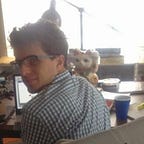Origins of C3I
Fascinating, I had no idea.
Warren Weaver, by contrast, enjoyed a much more sanguine opinion of humanity and its foibles and, perhaps for that reason, was better suited to operate down in the trenches with scientists, rather than serve as remote bureaucratic figurehead like Bush, or as a high-profile political operative like James Conant. He was much more the consummate science manager, the hands-on assessor of specific research projects, the forger of transdisciplinary research networks, the conjurer of new fields out of inchoate fragmented developments (Kohler, 1991, p. 301). It was he whom the movers and shakers sought out to coordinate their wartime research programs, perhaps because he had a superior working understanding of the intellectual issues involved; Weaver, like Kilroy in World War II, had been everywhere that was going anywhere; he was the anonymous entity behind the lines who left his mark on most of the nascent cyborg sciences. Precisely for that reason, the C3I paradigm of military research is something most transparently inscribed in his work: “it may be reasonable to use a still broader definition of communication, namely, one which includes the procedures by means of which one mechanism (say, automatic equipment to track an airplane and to compute its probable future position) affects another mechanism (say, a guided missile chasing this airplane)” (Shannon & Weaver, 1949, p. 3). More than anyone else, it is Warren Weaver whom we have to thank for opening doors to the closed rooms for the cyborgs to find their way into the fin-de-siècle world; and yet, of all the wartime science czars such as Bush, Conant, or von Neumann, he is the only one to not have attracted a biographer. 11 Warren Weaver took degrees in civil engineering and mathematics from the University of Wisconsin, there becoming the protégé of the physicist Max Mason. After some World War I work on dogfights at the Army Air Corps and a stint at Cal Tech, he spent the decade of the 1920s on the mathematics faculty at Wisconsin. Mason subsequently brought him to New York in 1932 to head up the newly created division of natural sciences at the Rockefeller Foundation, just when the Depression was forcing the foundation to contract and consolidate its grants. Although bereft of background in the area, Weaver managed to reorient the program toward his own vision of a “molecular biology,” which encompassed mathematical and physiological approaches to psychology (Kohler, 1991). As he confessed in his memoirs, “I started with genetics, not because I realized in 1932 the key role the subject was destined to play, but at least in part because it is a field congenial to one trained in mathematics” (1970, p. 69). One historian has contextualized this reorientation of the Rockefeller philanthropies away from physics and towards “molecular biology” in the 1930s as part and parcel of its initiative to produce a new model “Science of Man”: genetics was deemed a more respectable underpinning for the social sciences than the field of eugenics (Kay, 1993). 12
Mirowski, Philip (2001–12–03). Machine Dreams: Economics Becomes a Cyborg Science (pp. 169–171). Cambridge University Press. Kindle Edition.
